
Breeding efforts, driven by the unwavering dedication of our breeders and researchers, are tirelessly working towards building genetic resistance to root rot pathogens into pea and lentil varieties. In Canada, our breeding programs are expected to screen all their genetic lines for resistance to root rot, particularly Aphanomyces.
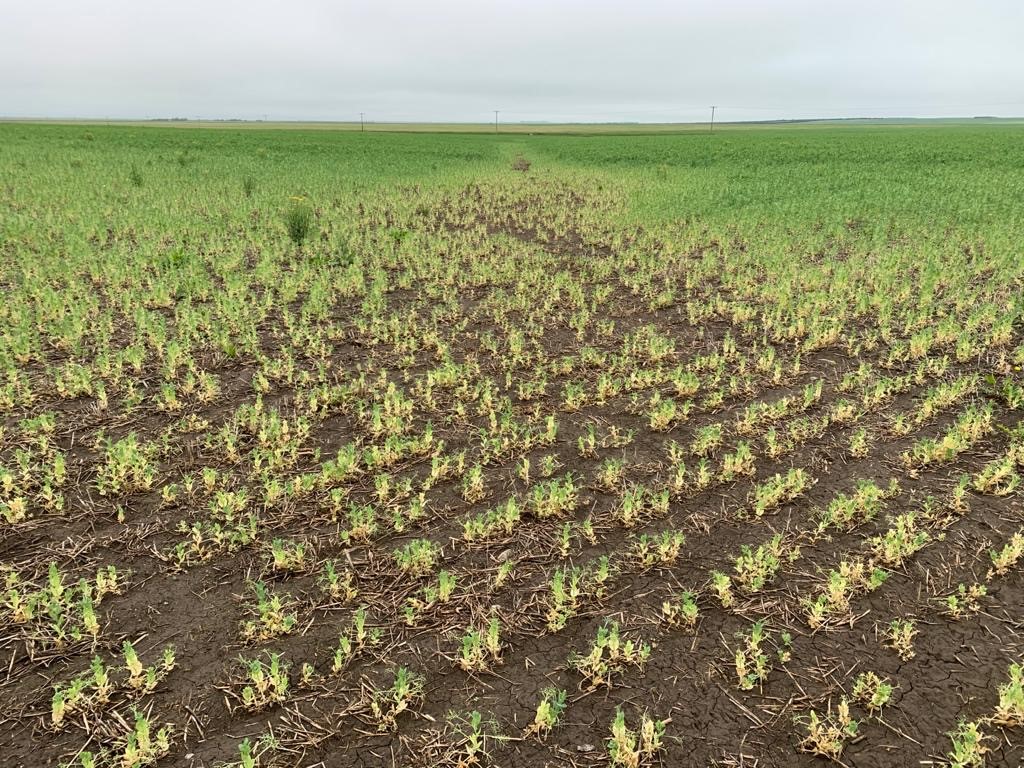
Despite the substantial investment of resources and effort in breeding, the development of genetic resistance is a complex process. As a result, there are currently no commercially available varieties of peas and lentils in Canada.
On a positive note, researchers have concluded that resistant cultivars are, so far, the most effective strategy for growing peas and lentils in the presence of Aphanomyces. Commercial varieties are still several years away.
Aphanomyces
The breeding process is not without its complexities. Breeders are fortunate to have access to lines of peas with partial resistance to Aphanomyces root rot. However, the challenge lies in understanding the intricate workings of Aphanomyces and root rot complex resistance. Aphanomyces infections are rarely isolated, often accompanied by Fusarium spp. in infected plant tissue. This means that the mechanisms and genetic response required for Aphanomyces resistance can differ from those needed for Fusarium spp. resistance, Rhizoctonia, Pythium, and others. This complexity necessitates breeders and researchers to decipher the combination of genes and plant responses that trigger resistance to Aphanomyces in the field, known as quantitative resistance. The challenge with quantitative resistance is incorporating all the minor genes into new pea and lentil line crosses to achieve stable partial resistance.
Fusarium
No registered varieties of field peas or lentils are entirely resistant to Fusarium root rot. In field pea, some quantitative genes providing partial resistance to F. avenaceum and F. solani f. sp. pisi have been identified, and many registered pea varieties have a moderate resistance (MR) to Fusarium root rot rating.
Researchers are also working to incorporate partial resistance into pea cultivars using resistance sources from France and the United States.
There is also ongoing work investigating wild relatives of lentils that may have some resistance that can be crossed into cultivated lines. Resistance mechanisms in other pulses, such as fenugreek and lupin, that are non-hosts resistant to root rot, are also being investigated.
The Challenge
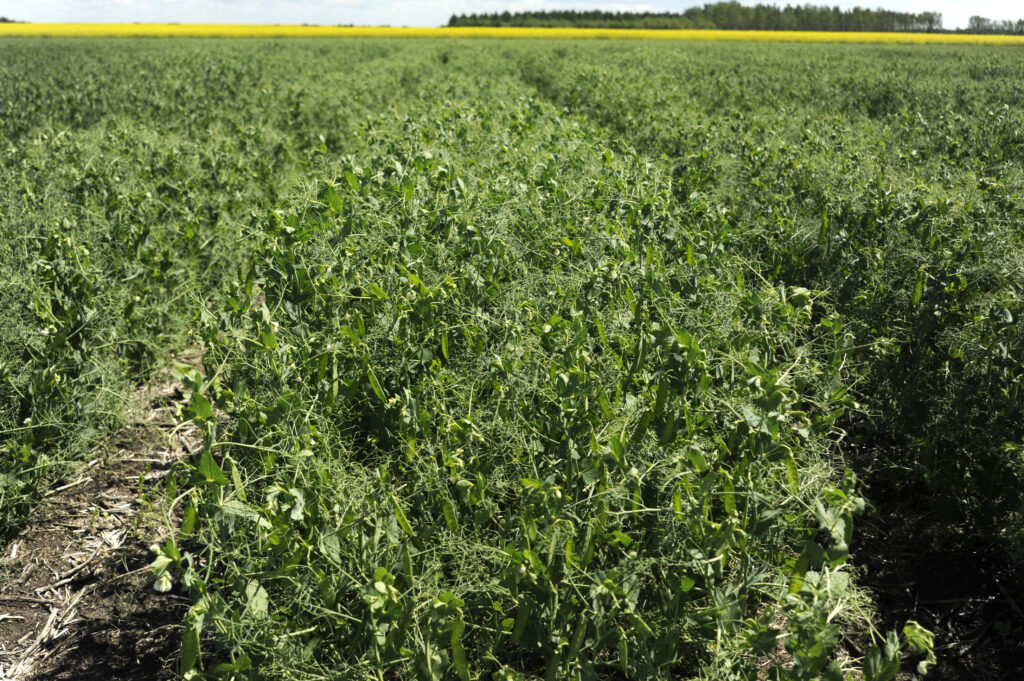
Why is it so tough to find sources of resistance and breed them into pea and lentil varieties? Part of it comes down to the complexity of the disease itself and the complexity of resistance mechanisms.
- Identify the disease pathogens and the specific variations or strains of root rot in the soil.
- Identify pea and lentil germplasm resistant to those disease strains.
- Transfer that resistance into pea and lentil germplasm, which can then be incorporated into pea and lentil breeding programs.
It sounds straightforward, but it is a detailed process in which tens of thousands of plants are evaluated through experiments designed to identify disease-causing pathotypes and sources of resistance and develop methods and techniques to help researchers move that resistance into new pea and lentil breeding lines more efficiently and evaluate the results more quickly.
Because the environment plays a significant role in root rot development, resistance expression and responses by the plant can differ in the field compared to in the greenhouse, where screening initially takes place. Therefore, breeding for resistance has been challenging, and progress has been limited. Using resistant cultivars would be the most effective strategy for managing root rot, but competitive varieties are still far from commercialization.
Some resistance sources carry undesirable traits, like node length or flower colour, that must be bred out of the new cross without losing the resistance genes. Additionally, partial resistance from breeding programs does not always translate well into the field.
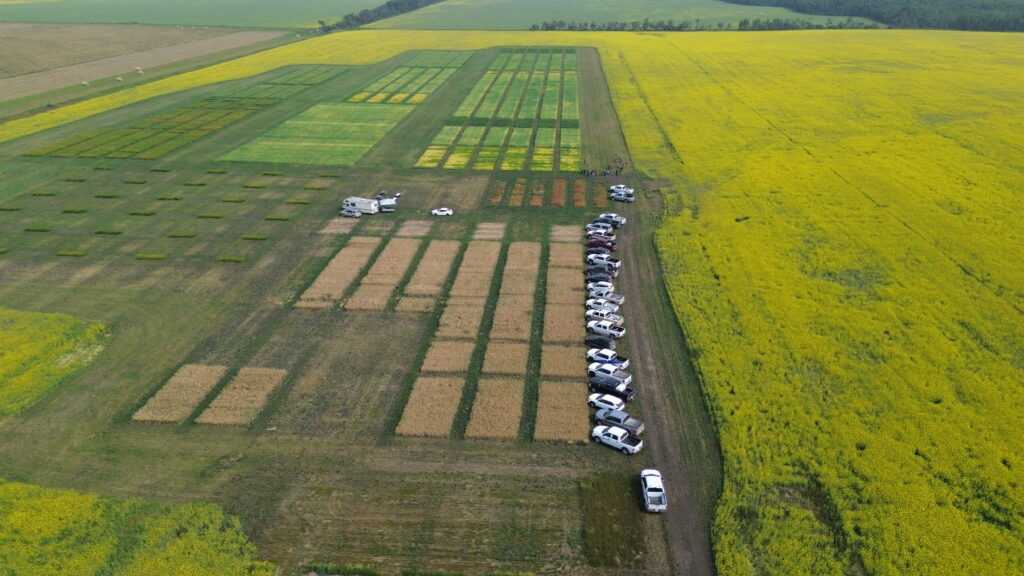
Seed Coat Tannins
One success point has been discovering the inherent resistance or tolerance to root rot infections from pigmented seedcoats containing tannins. Tannin-free varieties have thinner seedcoats, which tend to be prone to cracking, providing an opportunity for fungal infections.
Tannin-free varieties also lack other chemical properties that help protect the seeds from disease infection during germination.
In field peas, varieties with pigmented seedcoats, such as in the dun and maple pea classes, show partial resistance to Fusarium and other root rot pathogens.
Complicated and Time-Intensive Process
Improved Varieties
Breeders work to incorporate the best genetics from different parents into a new and improved variety. To do this, researchers make crosses and then screen thousands of lines to identify the special one.
Traditional breeding methods, such as crossing lines, growing the resulting plants in multiple environments, selecting the plants with the traits you’re looking for, and collecting those seeds to repeat the process, can take 10-20 years to release a new variety.
Ensuring the new variety is stable across lines and locations takes time. Living organisms are dynamic, so there is also a race against climate change, disease adaptations, and pests.
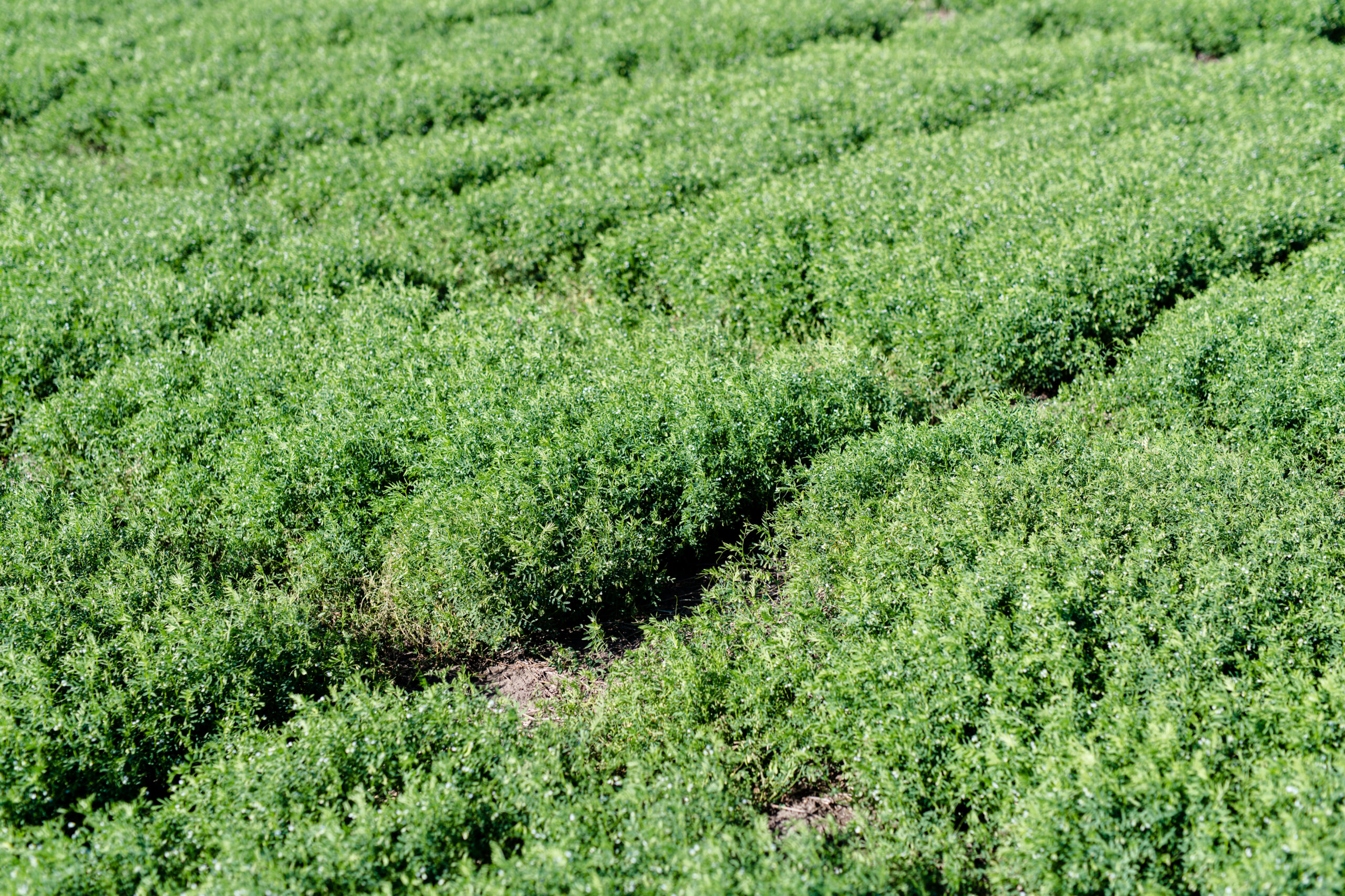
Characteristics & Traits
Desirable traits such as maturity, yield, and disease resistance depend on the environment. It takes multiple years of growing new genetics in various regions and growing conditions to determine which lines contain environmentally sensitive traits.
Only at the end of the breeding cycle can nutritional characteristics and processing quality be determined. This requires many seeds to be ground, processed and analyzed.
Researchers are creating new varieties with simple trait improvement in three years. However, new varieties can be delivered in eight years when considering a complex list of traits.
Phenotyping & Genetic Markers
Before identifying genetic markers, the physical traits of the plants need to be characterized. This is known as phenotyping, which can take two to five years.
Once phenotyping is complete, this information is matched against the plants’ genome to determine which genetic markers or areas within the genome carry the trait of interest.
Researchers then use a genetic tool called single nucleotide polymorphism (SNP), in which a variation is found in a genetic sequence associated with that genetic trait or series of traits.
These variations are known as genetic markers, which researchers can then screen for.
With advancements in breeding methods, researchers can associate genotypes (genetic sequences of individual plants) with observable traits (phenotypes), cutting the time to variety release in half. However, this process continues to take time and significant resources.
Molecular markers can screen breeding material and conduct pathogenicity tests to ensure the markers indicate resistance to Aphanomyces.
Genome
While crops like canola have had their genomes mapped for ages, this is not the case for more minor pulse crops. Sequencing of pulse crop genomes has had to wait for costs to come down and technology to improve.
Pulse researchers hope to continue mapping the genomes of some of the more minor pulse crops to speed up the development of trait-based selection.
Researchers can target trait complexes instead of one trait at a time by having all the information on a plant species’ genetic characteristics. This is a dynamic tool that is evolving quickly.
Future research investments are needed to develop prediction models to speed up trait and genomic association screening, providing the highest chance of success.
Current Research
Crop Development Centre (CDC)
With the CDC, Drs. Sabine Banniza and Tom Warkentin continue to work on obtaining genetic resistance to Aphanomyces root rot in peas.
Through collaboration with colleagues in France and the United States (U.S.), resistant genes from two primary sources have been combined in the background of two yellow and four green pea varieties from the CDC. The varieties will enter co-op testing for registration and released to growers.
The CDC team has tested plant germplasm from all over the world, searching for sources of resistance. Breeders must marry disease resistance and good performance in Canadian conditions into one plant, which is challenging.
Commercially competitive varieties are still several years away.
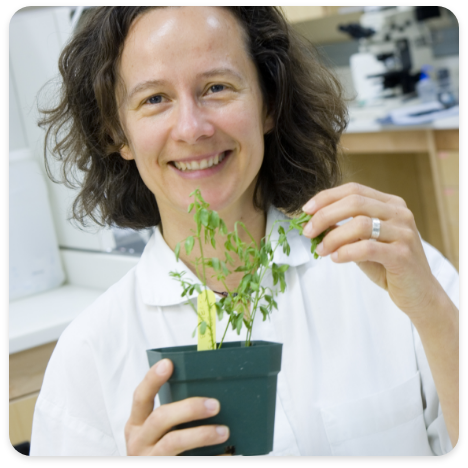
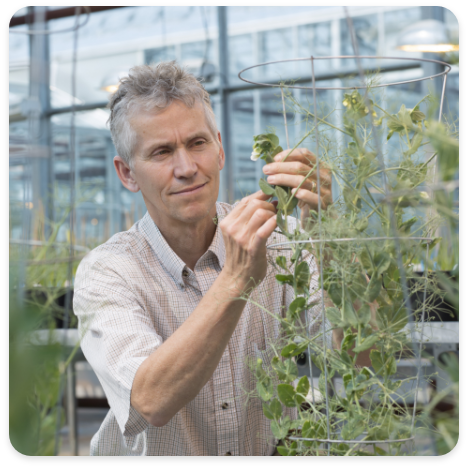
Other Projects
They are screening current lentil germplasm and wild lentil species to identify sources of Aphanomyces resistance.
They are screening several cultivars from the regional pea, lentil, and chickpea trials against F. avenaceum in search of partial resistance in the current germplasm.
Agriculture and Agri-Food Canada (AAFC)

Dr. Syama Chatterton and her team are working to identify pea lines with partial resistance to Fusariumroot rot pathogens. The longer-term goal is to breed pea cultivars with stacked resistance to both Fusariumand Aphanomycesroot rot.
Dr. Chatterton’s team determines resistance indicators by looking for specific plant genes that may be turned on or off during infection by Aphanomycesor Fusarium. This could advance the screening process for breeding.
In the spring of 2018, Chatterton and a team of researchers kicked off a major five-year project examining three elements of a pea root rot management program.
- One part of this project will source and screen germplasm, offering resistance, and test it under Alberta conditions.
- The second part was physiology and a better understanding of the genetics of resistance and how to use these genetics as a further tool to help with breeding efforts.
- The third part evaluated the effectiveness of agronomic strategies that can be used to avoid or minimize the impact of Aphanomyces root rot.
Cross-Province Breeding Efforts
Dr. Chatterton and her Saskatchewan colleagues have divided field research into two root rot causal agents. Dr. Chatterton is covering Fusarium, and the Saskatchewan team is handling Aphanomyces. The goal is to identify registered pea germplasm lines with some resistance to Fusarium, Aphanomyces or ideally both and move that resistance into Canadian-adapted lines.
The AAFC pathology teams, including those at Brandon and Morden, Manitoba, are called upon to sift through the pea genome to identify disease-resistance genes.
Resources
Finding New Ways to Breed Aphanomyces Resistance in Peas and Lentils | SPG
Diseases of Pulse Crops | Alberta Pulse Growers (APG)
Genomics Tools in Pulse Breeding | SPG
Research Keeping Up the Fight Against Aphanomyces | APG
Root Rots: A Complex International Challenge | SPG
Showcasing the Production of New & Novel Pulse Crops in Saskatchewan | SPG
To learn more about variety options and to find a local supply of certified seed:
- Interactive SaskSeed Guide | Saskatchewan Seed Growers Association
- Alberta Seed Guide
- Seed Manitoba
- Visit the SPG’s pulse regional variety trial portal to access up-to-date data and information for pulse varieties in Saskatchewan and performance data for specific regions and years.
- APG has funded regional variety trials to ensure growers can access current yield, standability, and disease resistance information.